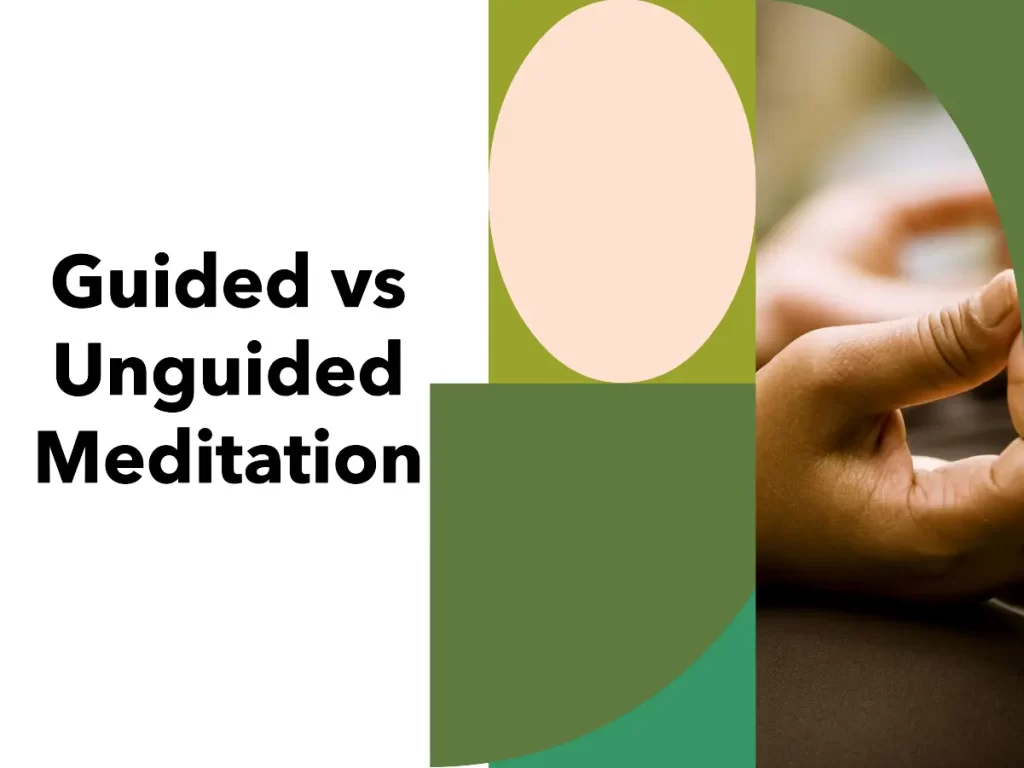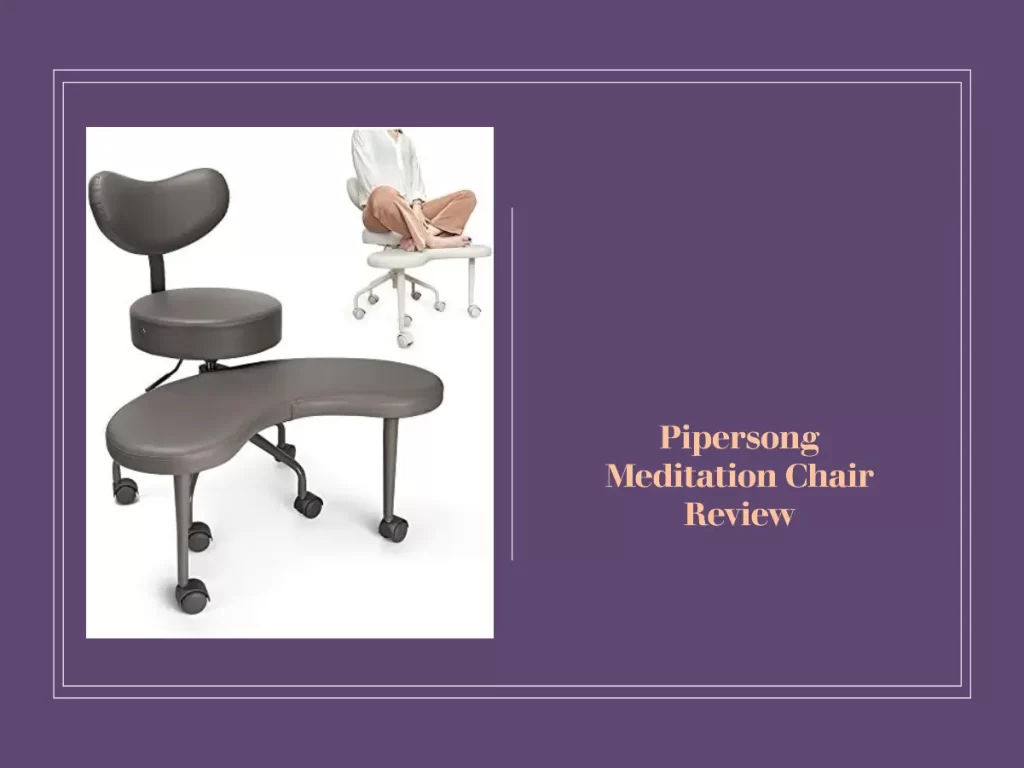As meditation has become more common, you will see that there are a number of ways of teaching meditation. This guided form of meditation is to bring a newbie to par with the experts to get them started. It helps you avoid making any mistakes and getting things right also increases the chances of upholding the new habit. However, complications in meditative techniques are not as common. As a beginner, you only need to follow a few basic steps and use resources that are already available on digital platforms for free. Sometimes guided meditation classes can be expensive and time-consuming, while they teach you stuff that you can Google or search on YouTube.
Considering the pros and cons of both guided and unguided meditation, we have decided to write this detailed and long article to answer the question is it better to do guided or unguided meditation?
What Is Guided Meditation?
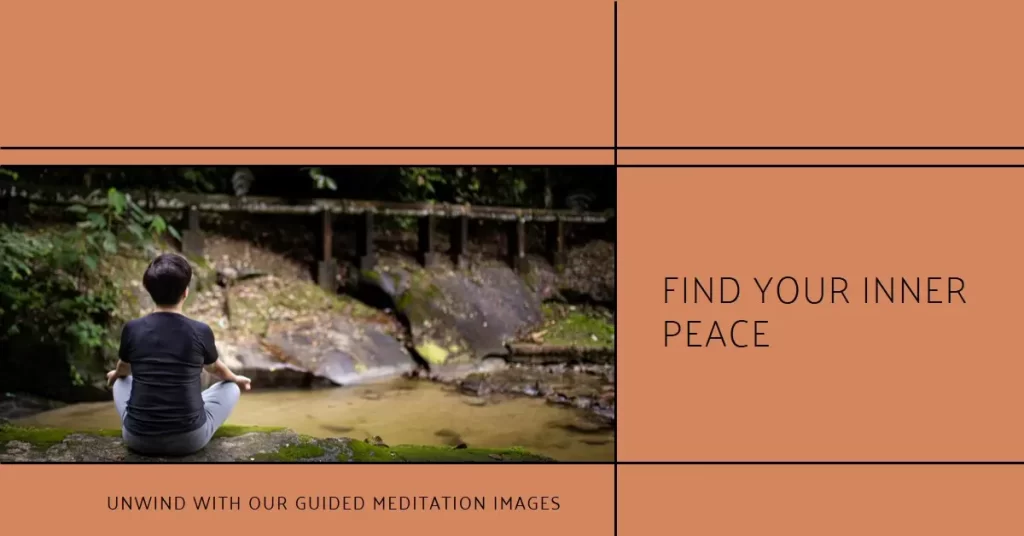
Definition and Overview
As is obvious by the name, guided meditation is done with the help of a professional expert or teacher of some kind. The guide in this meditation technique takes you along through every stage and step of meditation, teaching you the correct posture, how to take in breath and take out breath, and even chanting mantras or other specifics of a meditative style. Emphasis of guided meditation remains on the fact that you are a student and learning from a professional. This is why, throughout the whole meditative process, you are listening to your teacher’s instructions of audio aids or seeing through visual aids.
Common Techniques Used In Guided Meditation
As you take part in a guided meditation, there are a few tips and techniques that the teacher will teach you. These instructions are most commonly used for students that are beginning as newbie meditator.
- Breathing: techniques in guided meditation always emphasize your breathing. There are specific breathing patterns for specific meditation techniques. While transcendental meditation and mindfulness meditation require you to focus only on breathing, chakra meditation and mantra meditation are a bit different
- Mental Status: during meditation, there are certain states that your mind should be in. Sometimes meditative techniques follow a plan of ridding your brain of any thoughts and other techniques can require certain visuals. An experienced meditator knows this, but as a beginner guided meditation can help you.
- Mantras: meditation uses specific phrases and chants. Upon searching these chants, you can get confused because they are in Sanskrit. So, irrespective of the type of meditation, a mindful guide will make these phrases simpler for you to understand and apply.
Benefits of Guided Meditation (Include Statistics)
When you think of guided meditation, imagine that you are learning to ride a bicycle, and experienced meditators or teachers are the training wheels. Guided sessions of meditation will help you along your meditative journey until it is time for you to let go. They help you get started and help in building a lifelong habit that is correct and brings peace. Guided meditation practice works and to prove it, here are a few statistics:
- A class of 10 days of guided meditation is seen to reduce stress by 14%
- One class of guided meditation can reduce irritability by 27%
- Participants in a 3 day class of guided meditation showed greater chances of return to meditative practice than unguided newbies.
What Is Unguided Meditation?
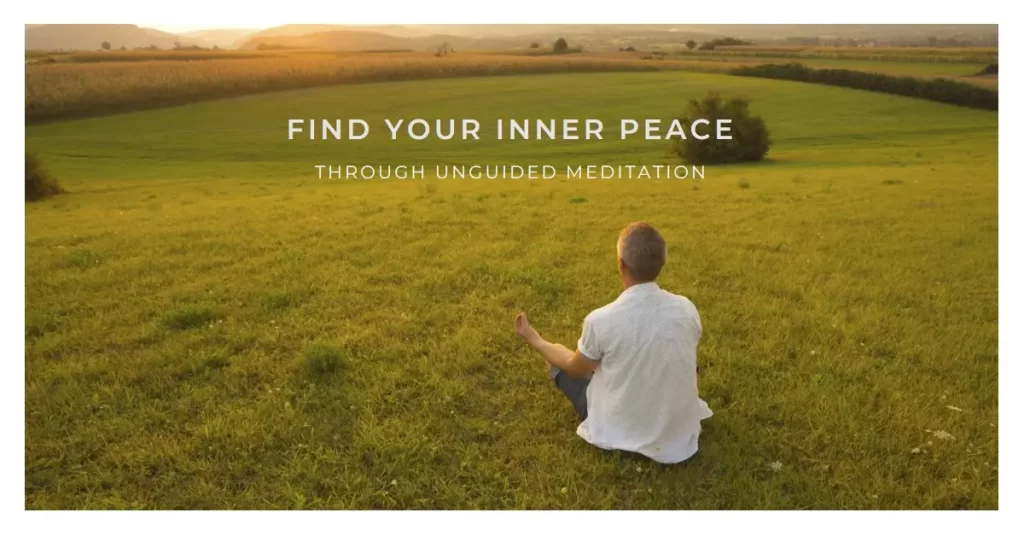

Definition and Overview
Also known as silent meditation or independent meditation, unguided meditation requires only one individual to perform it. There are no teachers, experienced meditators or any other person taking you through the whole process of meditation. The external guidance from a person is taken away and it is the beginner figuring out meditative techniques on their own. However, this gives a freedom of choice to the meditator, as they can tailor meditation sessions to personal preferences and meet specific needs.
Common Techniques Used In Unguided Meditation
As you are new to meditation, then things to really consider as instructions in unguided meditation are:
- Mind: your mind is at the center of your meditation session. You have to learn to be mindful, pay attention to certain things and remove all intrusive thoughts from your head. Lack of a meditation teacher or external voice will help you reach mindfulness much faster and efficiently.
- Concentration: during meditation, getting distracted is not an option. You have to bring into focus a certain object, feeling or emotion, and then meditate on it. On self-guided meditation, reaching high concentration may take some time, but even in guided meditation, beginners face difficulties in the start
- Learning Process: with unguided meditation, it often becomes a bit too stressful because you see other people reaching a Zen mood, while you are still struggling to keep out intrusive thoughts.
Benefits of Unguided Meditation (Include Statistics)
With unguided meditation you can be sure to not face any distractions. No teacher, guide or instructor will be present to let you know what you’re doing is wrong and you need to do this. Albeit, it takes some time to excel, but if you learn on your own then the lessons tend to stick. Another benefit is your freedom to do as you want. You can give mantra meditation a try, but if it doesn’t work then you can choose to do transcendental meditation next time. If you join a class in a guided meditation approach, you are not afforded the same freedom of choice
- A study found approximately 70% of meditation experts to start with unguided meditation
- If you are personally motivated to explore motivation, then unguided meditation has 40% success rate
Guided Vs Unguided Meditation: The Pros and Cons
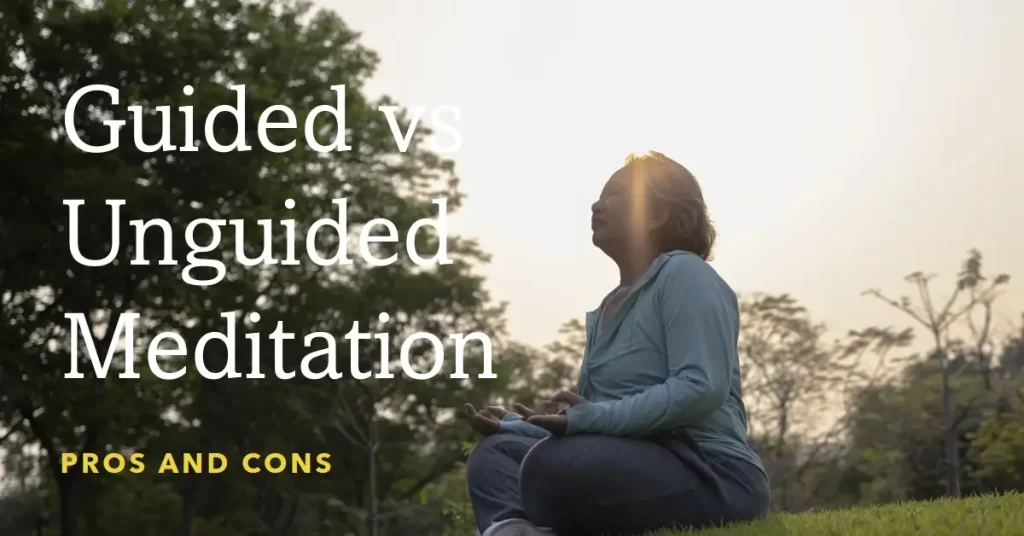

Now it is time to compare the pros and cons of both the techniques. In this section, guided and unguided forms of meditation will be reviewed, along with the processes, thoughts, and emotions of each technique. We begin with the pros and cons of guided meditation and then unguided practice will be discussed.
Pros of Guided Meditation
- Great Way To Start
Benefits of guided meditation include helping you to start in this field. A meditation course helps you get the hang of what meditation even is, if you have never meditated before
- Removes Any Confusion
As a beginner, there are several misconceptions and confusions that you must have towards meditation styles. In guided meditation, better understanding of the field becomes easy and you remove any confusion. Meditation apps are also a great way to remove confusion
- Helps You Focus
Listen to guided meditation apps or teachers to help you focus. As a newbie, you do not know how to get rid of intrusive thoughts and emotions, but living in the present moment can be done by learning meditation techniques from a professional
- Hundreds Of Years Of History In One Class
Think of meditation as hundreds and even thousands of years of wisdom from Hinduism and Buddhism. Exploring it on your own will only take you so far, you will ultimately need someone to support you through the meditation journey.
Cons of Guided Meditation
- Becoming Too Dependent
To keep you on track in guided meditation, you become dependent on a person to guide you. However, the basic premise of meditation is that it helps you explore your inner self. If you are too dependent on somebody else to help you do that, you have not followed the basic goal of meditation
- Inner Peace Or Outer Compulsion
The general benefit of meditation is that it helps you look within, but people find guided practice meditation to be too distracting. Instead of inner peace, students have complained that they lie about meeting their goals and ultimately do not understand their thoughts better.
- Invasion Of Personal Space
Insight meditation helps you explore the inner crevices of your thoughts and emotions. As you deepen your practice and come back to the present, you get to know the true you. Are you willing to share this with a random stranger, who happens to be your meditation instructor?
Pros of Unguided Meditation
- Easy To Maintain Focus
Unguided or silent meditation is great when you are learning to meditate and failing to maintain your focus. Usually when practicing unguided meditation, you reap the benefits because you are alone in a room and focusing on inner self. In such a setting, you get attention back every time without any hardship
- Free From Distractions
Your meditation experience from guided to silent meditation automatically improves because you are self-guided and nobody is standing over you, taking you along every step of the way. In a meditative state, you are not following someone’s voice guide, but your journey is your own exclusively.
- Reflect And Ponder
It’s easy to get confused with unguided meditation, but meditation is led by your own feelings. Even if you’re new to it, unguided meditation helps you reflect on how you are feeling. As you meditate each time, you will see that meditation can be done easily, you easily come back to the present moment and attain inner peace.
- Availability Of Resources
Even the savviest criticism against unguided meditation still accepts that resources today have become enough for mindfulness meditation to be achieved, which is most complicated. Mantra meditation, body scan meditation, etc. all have numerous available resources. Meditation apps offer the same guidance, without any distractions
Cons of Unguided Meditation
- Coming Back To The Present Moment Takes Longer
Elongating your meditative state is not so bad, unless you’re on a time crunch. Meditation can be done in 15 minutes, but if you are on your own then starting a meditation practice and ending it can take 15, 20, 40 minutes or more. There is no way for you to know
- It Takes More Time To Finesse
Guided meditation is easier because an expert meditator can help you achieve greater goals. However, on your own, silent meditation can take weeks, months and even years to finesse
Which One Is Better For You?
Factors To Consider (Experience Level, Goals, Preferences, Etc.)
- Are You Easily Distracted?
If you are easily distracted, then opt for unguided meditation on your own. Your journey with guided meditation will only mean that you’re spending money, but learning nothing
- Are You Tech Savvy?
If you do not know your way around digital resources, then guided meditation is for you. Instead, of scrolling past videos, blogs and instruction manuals, just communicate one expert and learn
- Are You A People Pleaser?
Meditation means inner journey, but if you get competitive and want to smash goal after goal, then guided meditation is for you.
When to Use Guided Meditation
When you are a newbie, guided meditation is for you. If you are already confused and unwilling to go through the effort of exploring meditative concepts on your own, then guided meditation is to be used
When to Use Unguided Meditation
Practicing unguided meditation is recommended when you want to just explore, how you fit in with numerous meditation techniques. Even as a newbie, you can try it, but it is better to practice meditation unguided if you already know the basic principles.
Tips for Effective Meditation Practice
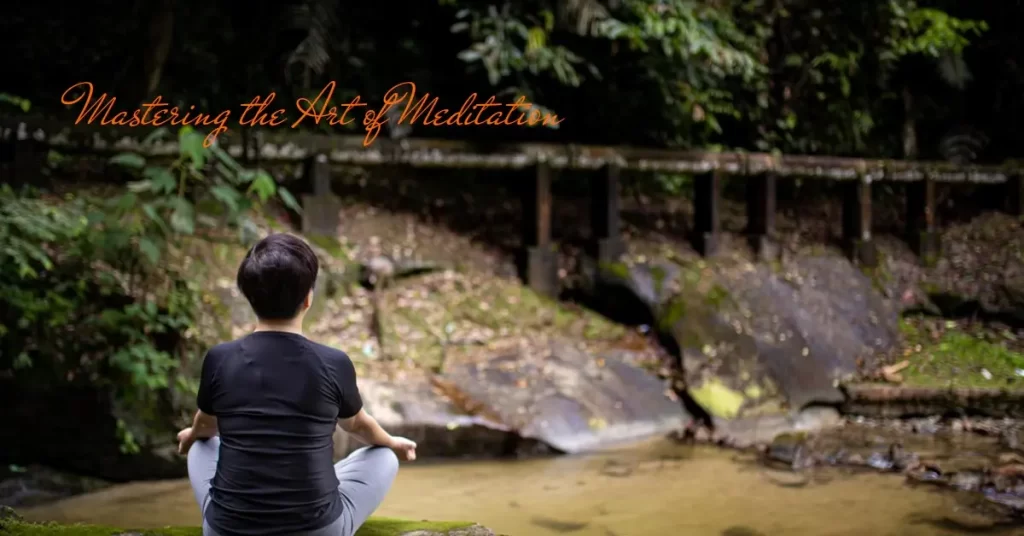

Preparing For Your Meditation Session
Whether guided or unguided, meditation comes after preparation. Whenever you meditate, make sure you have a set routine to get in the zone
Guided Meditation Resources (Apps, Videos, Etc.)
Effective meditation can be attained through resources. To fully reap the benefits, go through these resources, which are available for free and meditation helps you attain expertise. You can use resources to:
- Use a timer
- Repeat a mantra
- Calm the mind
- Strike a balance
- Learn the basics
Cultivating a Consistent Meditation Routine
A pro tip for meditation beginners is also to bring your awareness without guidance and avoid mind wandering is through consistency. You cannot expect to become an expert on your first try. Whether a teacher or an app, it will take you at least a month to train your mind and then years to become an expert.
Frequently Asked Questions(FAQ’s)
Yes, a mix of guided meditation in the beginning, followed by unguided meditation in app to help you explore is a great way to get started.
Anything upwards of 30 minutes is great to bring your attention back and develop a sense of inner peace
Whenever you find enough time to put the world outside and focus on inner self is the best time to meditate.
As an experienced meditator, I love unguided meditation. But, when I try a new technique, I always attend at least one class to get started
No, unguided meditation is great to get into your deeper self. With guided meditation, you are paying more attention to the teacher than inner self
30 minutes is great for a beginner
It is the suspension of all worldly thoughts from your mind and opening your inner self to yourself. In this type of meditation, you become acutely aware of the inner workings of your mind, such that even the twitch of feeling is identified
Yes, mantra meditation is great to help you focus on inner self and rid distracting thoughts
When you are completely present and in a meditative state, that’s what we call meditation.

